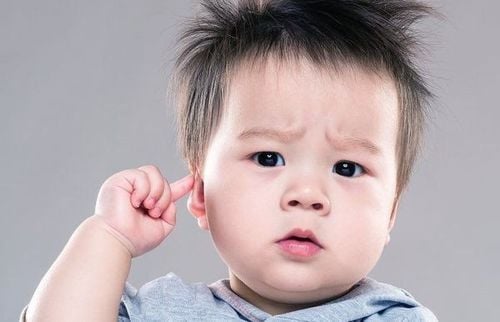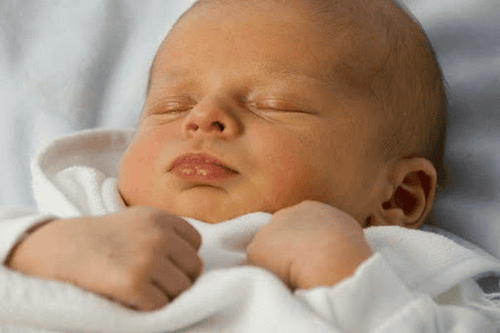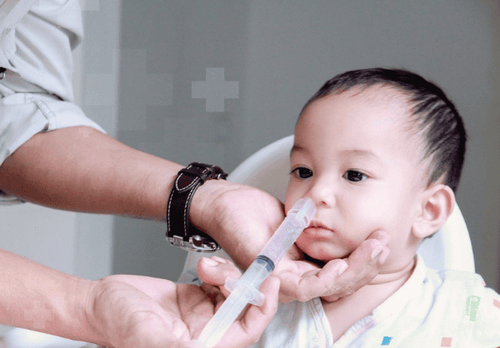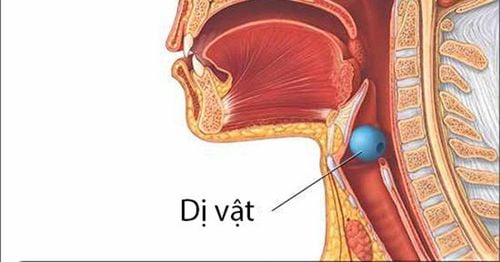This is an automatically translated article.
The article was professionally consulted by Specialist Doctor I Le Van Quang - Ear, Nose Throat Doctor - Department of General Surgery - Vinmec Nha Trang International General Hospital. BSCKI. Le Van Quang is an expert in the field of ENT with 15 years of experience.According to Mehl AL, Thomson V. The Colorado newborn hearing screening project, 1992-1999: on the threshold of effective population-based universal newborn hearing screening. Pediatrics. 2002 Jan;109(1):E7. 1-3 children with hearing loss/1000 babies born. Hearing loss, hearing loss in infants and young children affects the child's process of learning to speak and communicate in language. Many cases of severe hearing loss, deafness, ... can be mute, greatly affecting the future.
1. What is hearing loss?
Anatomically, the ear consists of three main parts: the outer ear, the middle ear, and the inner ear. In terms of hearing physiology, sound will enter the outer ear, through the middle ear, the inner ear, through the cochlear nerve to the brain stem, to the cerebral cortex and be decoded. From there, people will understand what that sound is, what it means.Hearing loss in children is a condition where the child's hearing is reduced compared to normal. Babies cannot hear whispers or very soft sounds. For children, the threshold for normal hearing on monophonic hearing is ≤15dB. If the hearing threshold is greater than 15dB, it is called hearing loss.
According to estimates of the World Health Organization, about 5% of the population, or 430 million people in the world, has hearing loss. Of these, 32 million children under the age of 15 have hearing loss - a partial or complete reduction in the ability to perceive sounds.
Hearing loss is divided into different degrees, from mild to moderate mild, moderate severe, severe and deaf. Hearing loss can be congenital, due to obstetric complications during childbirth or due to other causes after birth.

Nghe kém được phân loại thành 5 mức độ: nhẹ, trung bình nhẹ, trung bình nặng, nặng và điếc
2. Risk factors for hearing loss in infants and young children
There are many causes and risk factors for hearing loss in children, namely:2.1 Congenital causes Genetic: The leading cause of hearing loss in infants. About 50% of congenital hearing loss cases are hereditary. Some studies show that, families with parents with hearing loss, their children also have a higher risk of hearing loss than children with other healthy parents; Pregnancy of the mother If the mother has certain infections such as Rubella , herpes or syphilis during pregnancy, the baby may have hearing loss or deafness; Pregnant mothers using some toxic drugs such as antimalarial drugs, diuretics, aminoglycosides, cytotoxic can also cause hearing loss for the fetus after birth; Amniotic fluid infection before birth; There are some other abnormalities in the heart, eyes, auricle, ear canal, low hairline, no nucleus,... 2.2 Causes of obstetric complications during delivery Preterm birth, low birth weight: If Premature babies with low birth weight (less than 1500g) have a higher risk of hearing loss problems than babies born at full term. In addition, children with low birth weight are often associated with other risk factors such as jaundice, increased free bilirubin, respiratory failure requiring mechanical ventilation, sepsis, intraventricular hemorrhage, etc. risk of hearing loss in infants ; Neonatal jaundice: Increased free bilirubin can damage the auditory nerve nuclei of the brain stem, possibly destroying the auditory nerve and cochlear ganglion cells. Severe jaundice in the newborn can damage the hearing nerve, leading to hearing loss in the baby;

Vàng da sau sinh cũng là một trong số những nguyên nhân gây tình trạng nghe kém ở trẻ

Một số loại thuốc kháng sinh như Gentamicin và Tobramycin có thể gây tình trạng nghe kém ở trẻ
3. Hearing loss screening method
Children with hearing loss, if not detected and intervened early before the child is 2 years old, will not be able to restore language like normal children. This will make it difficult for children to communicate, learn, and affect their psychology. Therefore, early screening for hearing loss plays a very important role in the development of children.Newborn hearing screening should be done within 1 month of birth, confirm the diagnosis within 3 months of birth, and intervene if the baby has hearing loss within 6 months of birth. In the event that the above-mentioned timelines cannot be guaranteed, it should be done as soon as possible.
Hearing loss in children can be detected by:
Observing, seeing that the child does not respond to sounds, especially loud sounds; not interested in talking, slow to speak or unable to speak; Cochlear sound measurement combined with brainstem electroacoustic measurement. Note: Screening should be performed at least 2-3 times using different methods to confirm the diagnosis. At the same time, it is necessary to differentiate hearing loss from other problems such as: children are busy playing, do not pay attention to sounds, slurred speech due to other causes, behavior disorders (hyperactivity, poor concentration, autism). or mental retardation).
4. Prevention of Hearing Loss in Babies and Children
Hearing loss can be prevented in some cases. Measures are as follows:Pregnant women need to be carefully cared for in terms of nutrition and rest, to avoid fetal malnutrition; Pregnant women need to be vaccinated according to special vaccination programs with diseases that can cause congenital hearing loss in children; Monitor and register births in highly specialized medical facilities to prevent obstetric complications; Prevention of postpartum infections such as pneumonia, meningitis, encephalitis,...; Timely detection and treatment of inflammatory diseases of the ear, nose and throat; Early detection and treatment of pathological neonatal jaundice; Prevention of hearing loss due to side effects of drugs, trauma, noise,...
5. Treatment of hearing loss in infants and young children

Nếu nghi ngờ trẻ nghe kém cần đưa trẻ đi sàng lọc khiếm thính ngay
Children with inner ear disease or middle ear disease can use it. use devices to support hearing rehabilitation such as hearing aids, cochlear electrodes. The effectiveness of these assistive devices depends on many factors such as: Causes of hearing loss, degree of hearing loss, time of intervention, quality of equipment, time of wearing the device, listening environment, support family, children's coordination,...
If hearing loss is detected late, children may have difficulty in pronunciation, language and cognitive development compared with normal healthy children. , even suffer permanent disabilities such as mute, deaf. Therefore, it is necessary for children to participate in early hearing loss screening, when suspecting that children have hearing loss, they must go to intensive care for timely intervention and treatment.
Otorhinolaryngology - Vinmec Times City International Hospital is an address specializing in the examination and treatment of otitis media as well as common ENT diseases, head and neck tumors, and birth defects. otolaryngology by common surgical methods such as surgery, microscopic or endoscopic tympanic patch, fistula removal, Bondy surgery, nasopharyngeal aerosolization, nasal tip injection, nasal burning...
Please dial HOTLINE for more information or register for an appointment HERE. Download MyVinmec app to make appointments faster and to manage your bookings easily.













